-
EXECUTIVE SUMMARY
-
Market Attractiveness
- Global Network Slicing Market, by End User
- Global Network Slicing
-
Analysis
-
Global Network SlicingMarket, by Component
-
Market, by Application
-
Global Network SlicingMarket, by Region
-
MARKET INTRODUCTION
-
Definition
-
Scope of the Study
-
Market Structure
-
RESEARCH METHODOLOGY
-
Research Process
-
Primary Research
-
Secondary Research
-
Market Size Estimation
-
Forecast Model
-
List of Assumptions
-
MARKET DYNAMICS
-
Introduction
-
Drivers
-
Evolution of 5G technology
-
Increasing demand for high-speed network coverages across various market segments
-
of software-defined networking (SDN) and network function virtualization (NFV)
-
operation efficienc& time to market for delivery of 5G networks
-
in reducing expenses & capital expenditure
-
5G business
-
Challenge
-
Optimizing network resource usage
-
Impact of COVID-19
-
Impact on Telecommunication Industry
-
Increase in 5G enabled e-health solutions in the healthcare industry
-
y-o-y from 2020–2026
-
Increasing integration
-
Restraint
- Security breaches
-
Opportunities
- Ability to improve
- Helps network operators
- 5G RAN slicing to positively impact growth in
- Impact on overall market
-
MARKET FACTOR ANALYSIS
-
Value Chain Analysis/Supply Chain Analysis
-
Porter’s Five Forces Model
- Threat of New Entrants
- Bargaining Power
-
of Suppliers
-
Threat of Substitutes
-
Bargaining Power of Buyers
-
Intensity of Rivalry
-
GLOBAL NETWORK SLICING MARKET, BY COMPONENT
-
Introduction
-
Solution
-
Services
- Professional Services
- Managaed Services
-
GLOBAL NETWORK SLICING MARKET, BY END USER
-
Introduction
- Telecom Operators
- Enterprises
-
GLOBAL NETWORK SLICING
-
MARKET, BY APPLICATION
-
Introduction
-
Manufacturers
-
Healthcare
-
Government
-
Automotive
-
Media & Entertainment
-
Others
-
GLOBAL
-
NETWORK SLICINGMARKET, BY REGION
-
Introduction
-
North America
-
Market Size & Estimates, by Component, 2018–2026
-
Estimates, by Application, 2018–2026
-
Market Size & Estimates, by End User, 2018–2026
-
Market Size &
-
US
-
Market Size & Estimates, by Component, 2018–2026
-
Market Size & Estimates, by End User,
-
Market Size & Estimates, by Application, 2018–2026
-
Canada
-
Market Size & Estimates, by Component,
-
Market Size & Estimates, by End User, 2018–2026
-
Mexico
-
Market Size & Estimates, by Application,
-
Market Size & Estimates, by Component, 2018–2026
-
Market Size & Estimates, by End User,
-
Market Size & Estimates, by Application, 2018–2026
-
Europe
-
Market Size & Estimates, by Country, 2018–2026
-
Estimates, by End User, 2018–2026
-
Market Size & Estimates, by Component, 2018–2026
-
Market Size &
-
Market Size & Estimates, by Application, 2018–2026
-
Germany
-
Market Size & Estimates, by Component,
-
Market Size & Estimates, by End User, 2018–2026
-
France
-
Market Size & Estimates, by Application,
-
Market Size & Estimates, by Component, 2018–2026
-
Market Size & Estimates, by End User,
-
Market Size & Estimates, by Application, 2018–2026
-
UK
-
Market Size & Estimates, by Component, 2018–2026
-
Market Size & Estimates, by End User,
-
Market Size & Estimates, by Application, 2018–2026
-
Rest of Europe
-
Market Size & Estimates, by Component,
-
Market Size & Estimates, by End User, 2018–2026
-
Asia-Pacific
-
Market Size & Estimates, by Application,
-
Market Size & Estimates, by Country, 2018–2026
-
Estimates, by End User, 2018–2026
-
Market Size & Estimates, by Component, 2018–2026
-
Market Size &
-
Market Size & Estimates, by Application, 2018–2026
-
China
-
Market Size & Estimates, by Component,
-
Market Size & Estimates, by End User, 2018–2026
-
Japan
-
Market Size & Estimates, by Application,
-
Market Size & Estimates, by Component, 2018–2026
-
Market Size & Estimates, by End User,
-
Market Size & Estimates, by Application, 2018–2026
-
India
-
Market Size & Estimates, by Component,
-
Market Size & Estimates, by End User, 2018–2026
-
Rest of Asia-Pacific
-
Market Size & Estimates, by Application,
-
Market Size & Estimates, by Component, 2018–2026
-
Market Size & Estimates, by End User,
-
Market Size & Estimates, by Application, 2018–2026
-
Middle East & Africa
-
Estimates, by Component, 2018–2026
-
Market Size & Estimates, by Country, 2018–2026
-
Market Size &
-
Market Size & Estimates, by End User, 2018–2026
-
South America
-
Market Size & Estimates, by Application,
-
Market Size & Estimates, by Country, 2018–2026
-
Market Size & Estimates, by Component,
-
Market Size & Estimates, by End User, 2018–2026
-
Market Size & Estimates, by Application,
-
COMPETITIVE LANDSCAPE
-
Introduction
-
KeyPlayersMarket Share Analysis, 2019 (%)
-
Competitive Benchmarking
-
Competitor Dashboard
-
Major Growth Strategy in the market
-
Key Developments
-
& Growth Strategies
-
Product Developments
-
Mergers & Acquisitions
-
Contracts & Agreements
-
COMPANY PROFILES
-
ZTE Corporation
-
Company Overview
-
Financial Overview
-
Products Offered
-
Key Developments
-
SWOT Analysis
-
Key Strategies
-
Ericsson
-
Company Overview
-
Financial Overview
-
Products Offered
-
Key Developments
-
SWOT Analysis
-
Key Strategies
-
Affirmed Networks
-
Company Overview
-
Financial Overview
-
Products Offered
-
Key Developments
-
SWOT Analysis
-
Key Strategies
-
CISCO
-
Company Overview
-
Financial Overview
-
Products Offered
-
Key Developments
-
SWOT Analysis
-
Key Strategies
-
Nokia
-
Company Overview
-
Financial Overview
-
Products Offered
-
Key Developments
-
SWOT Analysis
-
Key Strategies
-
Samsung
-
Company Overview
-
Financial Overview
-
Products Offered
-
Key Developments
-
SWOT Analysis
-
Key Strategies
-
NTT Docomo
-
Company Overview
-
Financial Overview
-
Products Offered
-
Key Developments
-
SWOT Analysis
-
Key Strategies
-
BT Group PLC
-
Company Overview
-
Financial Overview
-
Products Offered
-
Key Developments
-
SWOT Analysis
-
Key Strategies
-
NEC Corporation
-
Company Overview
-
Financial Overview
-
Products Offered
-
Key Developments
-
SWOT Analysis
-
Key Strategies
-
Aria Networks
-
Company Overview
-
Financial Overview
-
Products Offered
-
Key Developments
-
SWOT Analysis
-
Key Strategies
-
Parallel Wireless
-
Company Overview
-
Financial Overview
-
Products Offered
-
Key Developments
-
SWOT Analysis
-
Key Strategies
-
Mavenir
-
Company Overview
-
Financial Overview
-
Products Offered
-
Key Developments
-
SWOT Analysis
-
Key Strategies
-
AMDOCS
-
Company Overview
-
Financial Overview
-
Products Offered
-
Key Developments
-
SWOT Analysis
-
Key Strategies
-
Argela Technologies
-
Company Overview
-
Financial Overview
-
Products Offered
-
Key Developments
-
SWOT Analysis
-
Key Strategies
-
Huawei Technologies
-
Company Overview
-
Financial Overview
-
Products Offered
-
Key Developments
-
SWOT Analysis
-
Key Strategies
-
APPENDIX
-
Discussion Blueprint
-
-
LIST OF TABLES
-
LIST OF ASSUMPTIONS
-
GLOBAL NETWORK
-
SLICING MARKET, BY COMPONENT, 2018–2026 (USD MILLION)
-
GLOBAL NETWORK SLICING MARKET, BY END USERS,
-
TABLE
-
GLOBAL NETWORK SLICING MARKET, BY APPLICATION, 2018–2026 (USD MILLION)
-
GLOBAL NETWORK
-
SLICING MARKET, BY REGION, 2018–2026 (USD MILLION)
-
NORTH AMERICA: NETWORK SLICING MARKET, BY COUNTRY,
-
TABLE
-
NORTH AMERICA : NETWORK SLICING MARKET, BY COMPONENT, 2018–2026 (USD MILLION)
-
NORTH AMERICA:
-
NETWORK SLICING MARKET, BY END USERS, 2018–2026 (USD MILLION)
-
NORTH AMERICA: NETWORK
-
SLICING MARKET, BY APPLICATION, 2018–2026 (USD MILLION)
-
US:NETWORK SLICING MARKET,
-
BY COMPONENT, 2018–2026 (USD MILLION)
-
US: NETWORK SLICING MARKET, BY END USERS,
-
TABLE
-
US: NETWORK SLICING MARKET, BY APPLICATION, 2018–2026 (USD MILLION)
-
CANADA: NETWORK
-
SLICING MARKET, BY COMPONENT, 2018–2026 (USD MILLION)
-
CANADA: NETWORK SLICING MARKET, BY END USERS,
-
TABLE
-
CANADA: NETWORK SLICING MARKET, BY APPLICATION, 2018–2026 (USD MILLION)
-
MEXICO: NETWORK
-
SLICING MARKET, BY COMPONENT, 2018–2026 (USD MILLION)
-
MEXICO: NETWORK SLICING MARKET, BY END USERS,
-
TABLE
-
MEXICO: NETWORK SLICING MARKET, BY APPLICATION, 2018–2026 (USD MILLION)
-
EUROPE: NETWORK
-
SLICING MARKET, BY COMPONENT, 2018–2026 (USD MILLION)
-
EUROPE: NETWORK SLICING MARKET, BY END USERS,
-
TABLE
-
EUROPE: NETWORK SLICING MARKET, BY APPLICATION, 2018–2026 (USD MILLION)
-
UK: NETWORK SLICING
-
MARKET, BY COMPONENT, 2018–2026 (USD MILLION)
-
UK: NETWORK SLICING MARKET, BY END USERS,
-
TABLE
-
UK: NETWORK SLICING MARKET, BY APPLICATION, 2018–2026 (USD MILLION)
-
GERMANY: NETWORK
-
SLICING MARKET, BY COMPONENT, 2018–2026 (USD MILLION)
-
GERMANY: NETWORK SLICING MARKET, BY END USERS,
-
TABLE
-
GERMANY: NETWORK SLICING MARKET, BY APPLICATION, 2018–2026 (USD MILLION)
-
FRANCE: NETWORK
-
SLICING MARKET, BY COMPONENT, 2018–2026 (USD MILLION)
-
TABLE29 FRANCE: NETWORK SLICING MARKET, BY END USERS,
-
TABLE
-
FRANCE: NETWORK SLICING MARKET, BY APPLICATION, 2018–2026 (USD MILLION)
-
REST OF EUROPE:
-
NETWORK SLICING MARKET, BY COMPONENT, 2018–2026 (USD MILLION)
-
REST OF EUROPE: NETWORK
-
SLICING MARKET, BY END USERS, 2018–2026 (USD MILLION)
-
REST OF EUROPE: NETWORK SLICING MARKET, BY
-
APPLICATION, 2018–2026 (USD MILLION)
-
ASIA-PACIFIC: NETWORK SLICING MARKET, BY COMPONENT,
-
TABLE
-
ASIA-PACIFIC: NETWORK SLICING MARKET, BY END USERS, 2018–2026 (USD MILLION)
-
ASIA-PACIFIC:
-
NETWORK SLICING MARKET, BY APPLICATION, 2018–2026 (USD MILLION)
-
CHINA: NETWORK
-
SLICING MARKET, BY COMPONENT, 2018–2026 (USD MILLION)
-
CHINA: NETWORK SLICING MARKET, BY END USERS,
-
TABLE
-
CHINA: NETWORK SLICING MARKET, BY APPLICATION, 2018–2026 (USD MILLION)
-
INDIA: NETWORK
-
SLICING MARKET, BY COMPONENT, 2018–2026 (USD MILLION)
-
INDIA: NETWORK SLICING MARKET, BY END USERS,
-
TABLE
-
INDIA: NETWORK SLICING MARKET, BY APPLICATION, 2018–2026 (USD MILLION)
-
JAPAN: NETWORK
-
SLICING MARKET, BY COMPONENT, 2018–2026 (USD MILLION)
-
JAPAN: NETWORK SLICING MARKET, BY END USERS,
-
TABLE
-
JAPAN: NETWORK SLICING MARKET, BY APPLICATION, 2018–2026 (USD MILLION)
-
REST OF ASIA-PACIFIC:
-
NETWORK SLICING MARKET, BY COMPONENT, 2018–2026 (USD MILLION)
-
REST OF ASIA-PACIFIC:
-
NETWORK SLICING MARKET, BY END USERS, 2018–2026 (USD MILLION)
-
REST OF ASIA-PACIFIC:
-
NETWORK SLICING MARKET, BY APPLICATION, 2018–2026 (USD MILLION)
-
MIDDLE EAST &
-
AFRICA: NETWORK SLICING MARKET, BY COMPONENT, 2018–2026 (USD MILLION)
-
MIDDLE EAST &
-
AFRICA: NETWORK SLICING MARKET, BY END USERS, 2018–2026 (USD MILLION)
-
MIDDLE EAST &
-
AFRICA: NETWORK SLICING MARKET, BY APPLICATION, 2018–2026 (USD MILLION)
-
SOUTH AMERICA:
-
NETWORK SLICING MARKET, BY COMPONENT, 2018–2026 (USD MILLION)
-
SOUTH AMERICA: NETWORK
-
SLICING MARKET, BY END USERS, 2018–2026 (USD MILLION)
-
SOUTH AMERICA: NETWORK SLICING MARKET, BY
-
APPLICATION, 2018–2026 (USD MILLION)
-
-
-
LIST OF FIGURES
-
MARKET SYNOPSIS
-
RESEARCH PROCESS
-
OF MRFR
-
FIGURE
-
TOP-DOWN AND BOTTOM-UP APPROACH
-
FIGURE
-
GLOBAL NETWORK SLICING MARKET, BY COMPONENT, 2018–2026 (USD MILLION)
-
GLOBAL NETWORK
-
SLICINGMarket, BY END USERS, 2018–2026 (USD MILLION)
-
GLOBAL NETWORK SLICING Market, BY APPLICATION,
-
FIGURE
-
GLOBAL NETWORK SLICING MARKET, BY REGION, 2018–2026 (USD MILLION)
-
NORTH AMERICA:
-
NETWORK SLICING MARKET, BY COUNTRY, 2018–2026 (USD MILLION)
-
NORTH AMERICA: NETWORK
-
SLICING MARKET, BY COMPONENT, 2018–2026 (USD MILLION)
-
NORTH AMERICA: NETWORK SLICING Market, BY
-
END USERS, 2018–2026 (USD MILLION)
-
FIGURE
-
NORTH AMERICA: NETWORK SLICING Market, BY APPLICATION, 2018–2026 (USD MILLION)
-
EUROPE: NETWORK
-
SLICING MARKET, BY COUNTRY, 2018–2026 (USD MILLION)
-
EUROPE: NETWORK SLICING MARKET, BY COMPONENT,
-
FIGURE
-
EUROPE: NETWORK SLICING Market, BY END USERS, 2018–2026 (USD MILLION)
-
EUROPE: NETWORK
-
SLICING Market, BY APPLICATION, 2018–2026 (USD MILLION)
-
ASIA-PACIFIC: NETWORK
-
SLICING MARKET, BY COUNTRY, 2018–2026 (USD MILLION)
-
ASIA-PACIFIC: NETWORK SLICING MARKET, BY
-
COMPONENT, 2018–2026 (USD MILLION)
-
FIGURE
-
ASIA-PACIFIC: NETWORK SLICING Market, BY END USERS, 2018–2026 (USD MILLION)
-
ASIA-PACIFIC:
-
NETWORK SLICING Market, BY APPLICATION, 2018–2026 (USD MILLION)
-
MIDDLE EAST &
-
AFRICA: NETWORK SLICING MARKET, BY COMPONENT, 2018–2026 (USD MILLION)
-
MIDDLE EAST &
-
AFRICA: NETWORK SLICING MARKET, BY COMPONENT, 2018–2026 (USD MILLION)
-
MIDDLE EAST &
-
AFRICA: NETWORK SLICING Market, BY END USERS, 2018–2026 (USD MILLION)
-
MIDDLE EAST &
-
AFRICA: NETWORK SLICING Market, BY APPLICATION, 2018–2026 (USD MILLION)
-
SOUTH AMERICA:
-
NETWORK SLICING MARKET, BY COMPONENT, 2018–2026 (USD MILLION)
-
SOUTH AMERICA: NETWORK
-
SLICING MARKET, BY COMPONENT, 2018–2026 (USD MILLION)
-
SOUTH AMERICA: NETWORK SLICING Market, BY
-
END USERS, 2018–2026 (USD MILLION)
-
FIGURE
-
SOUTH AMERICA: NETWORK SLICING Market, BY APPLICATION, 2018–2026 (USD MILLION)

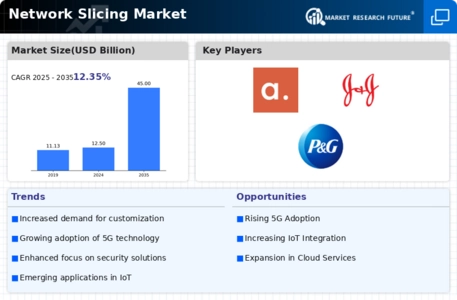
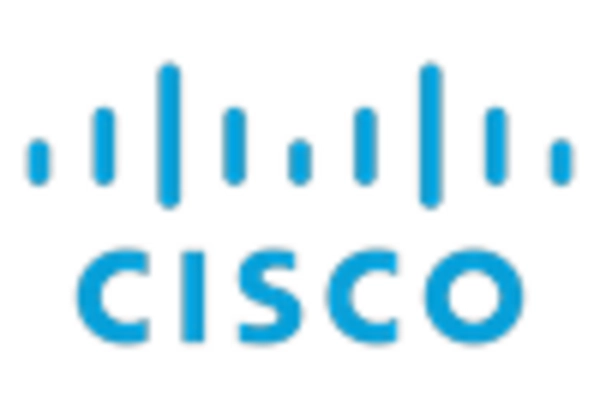
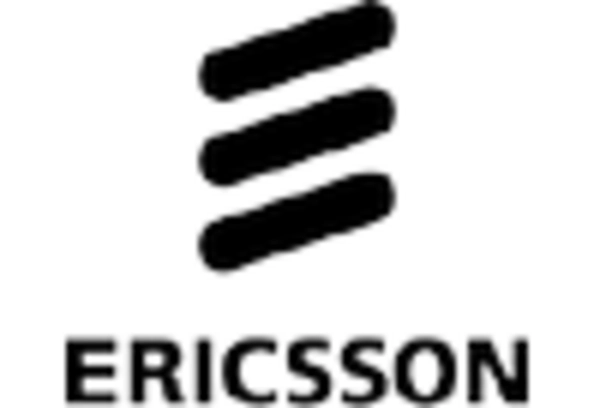
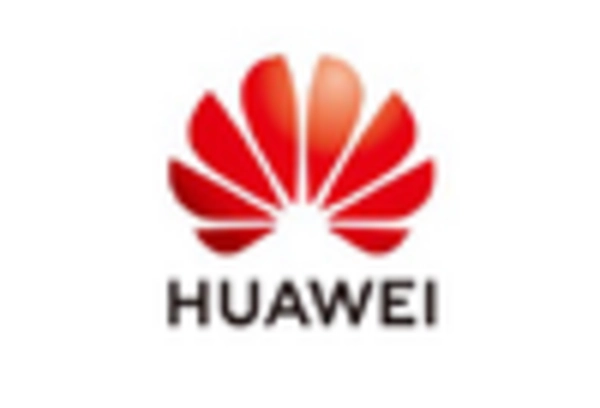

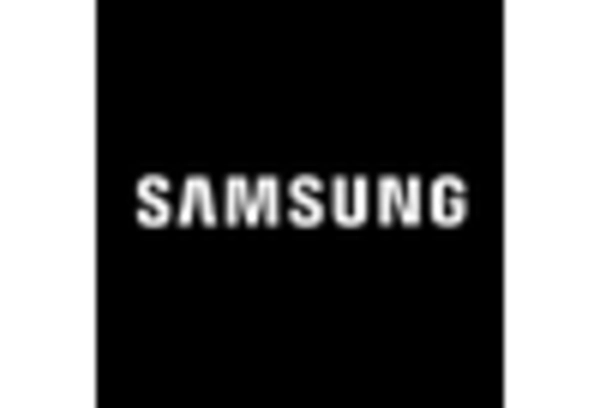
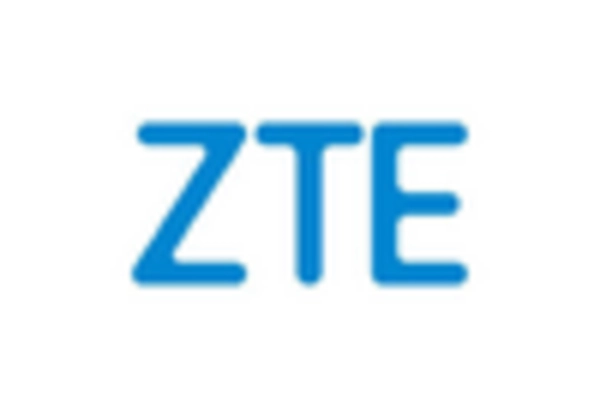









Leave a Comment